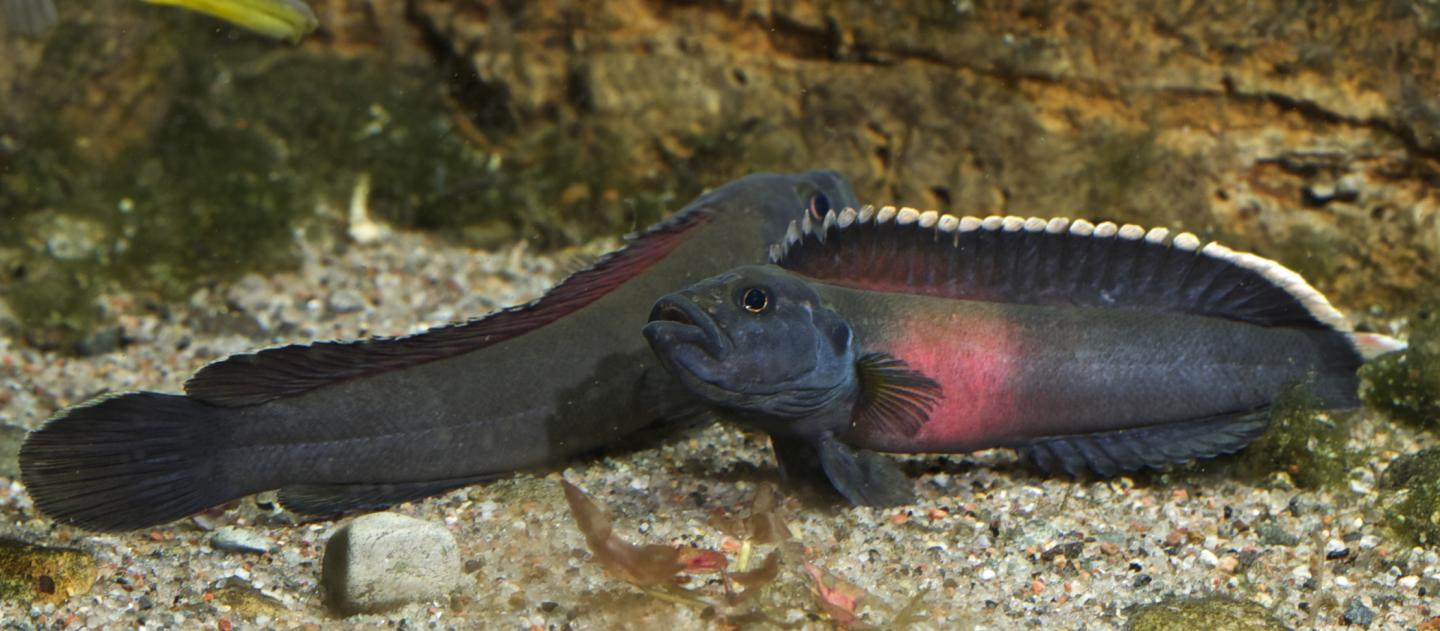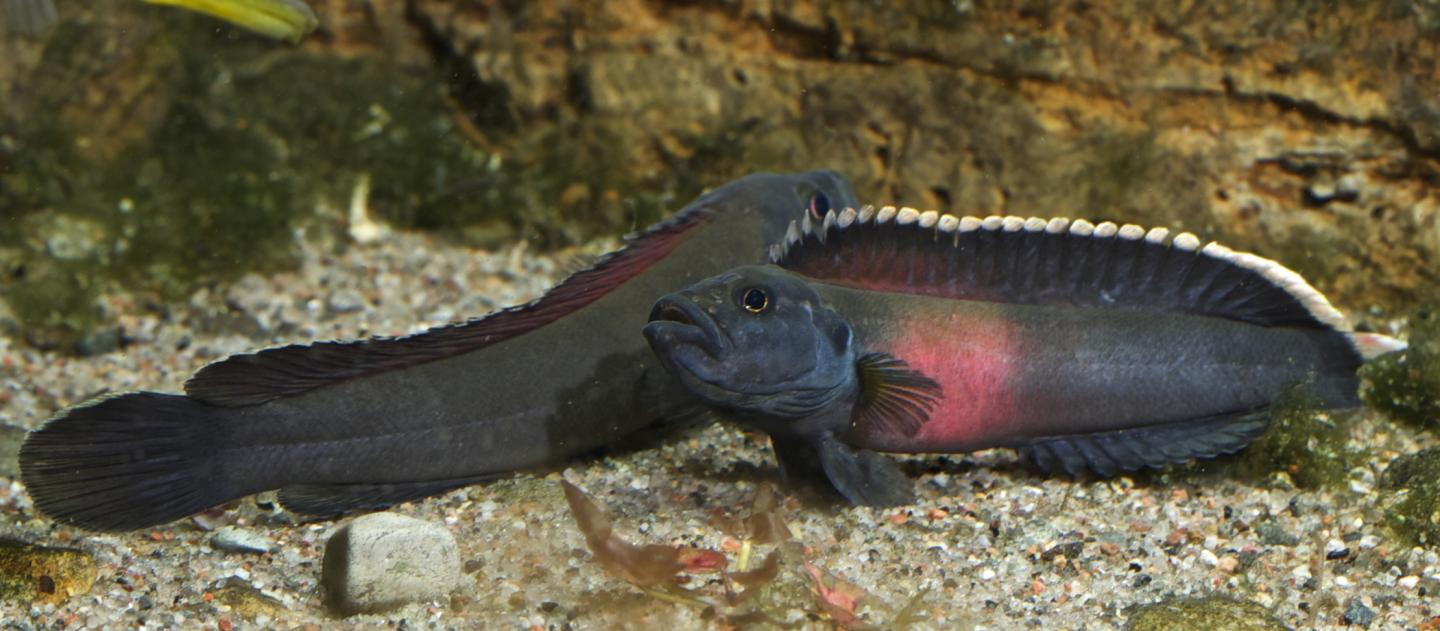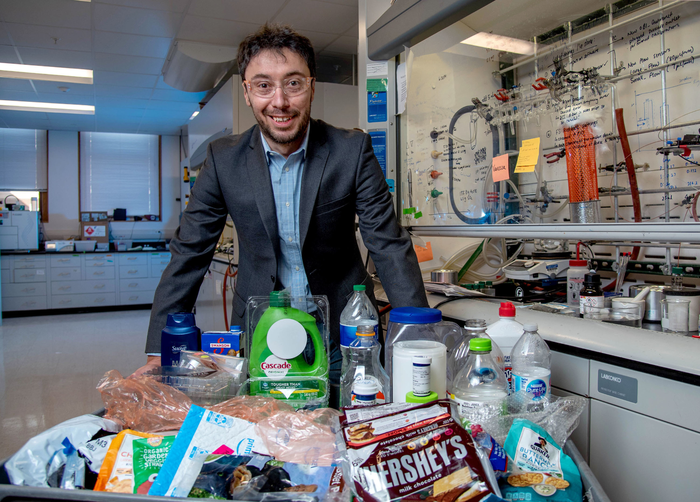
Credit: Oliver Lucanus
New DNA-based research provides compelling evidence that a group of strange-looking fish living near the mouth of the Congo River are evolving due to the intense hydraulics of the river's rapids and deep canyons. The study, led by scientists at the American Museum of Natural History, the City University of New York, and Fordham University, reveals that fishes in this part of the river live in "neighborhoods" that are separated from one another by the waters' turbulent flow. In some cases, the researchers found that fishes living less than a mile away from their relatives are actually exchanging very few genes. Many represent distinct species, according to the new study now out in the journal Molecular Ecology.
"In this very short section of the Congo, we find a tremendous diversity of fishes," said Melanie Stiassny, Axelrod Research Curator in the Museum's Department of Ichthyology and an author on the study. "We also know that this part of the river is relatively young, originating only about 3 to 5 million years ago. So what is it about this system that makes it such a pump for species?"
For the last 10 years, Stiassny and her colleagues, including hydrologists and geologists, have studied the lower Congo River — the final 200-mile stretch of the freshwater river before it empties into the Atlantic Ocean. Exceptional in depth, speed, and turbulence, the lower Congo is home to the world's most extreme rapids. The region is also remarkable for its biodiversity; scientists have identified more than 300 species of fish living there.
That diversity has long seemed puzzling to scientists because the lower Congo appeared to lack physical barriers which, if difficult to traverse, are understood to drive speciation by preventing animals from either side from breeding. Over time, this causes each group to develop separately.
The new study, which focuses on a group of freshwater, rock-dwelling cichlid fishes of the genus Teleogramma, adds weight to a theory long proposed by Stiassny and other experts: that the dynamic forces of the river itself are acting like barriers, generating diversity by isolating certain fishes from others for so long that their populations travel down different evolutionary paths.
"The genetic separation between these fishes show that the rapids are working as strong barriers, keeping them apart," said lead author Elizabeth Alter, from The City University of New York's Graduate Center and York College. "What's particularly unique about the lower Congo is that this diversification is happening over extremely small spatial scales, over distances as small as 1.5 kilometers. There is no other river like it."
The researchers analyzed the genomes of more than 50 individual fishes representing each of the different Teleogramma populations found in the lower Congo. They found that their species ranges correspond to geographic regions broadly separated by major hydrological and topographic barriers, indicating that these features are likely important drivers of diversification.
The authors also note that there are important conservation implications to this work: about 25 percent of the fish in the lower Congo are endemic, or only found in this particular location. But the area is currently being proposed as a site for major dam development.
"Activity like that would majorly interrupt the evolutionary potential of this system," Stiassny said. Jason Munshi-South, from Fordham University, was also an author on this paper.
###
American Museum of Natural History
The American Museum of Natural History, founded in 1869, is one of the world's preeminent scientific, educational, and cultural institutions. The Museum encompasses 45 permanent exhibition halls, including those in the Rose Center for Earth and Space and the Hayden Planetarium, as well as galleries for temporary exhibitions. It is home to New York State's official memorial to Theodore Roosevelt, a tribute to Roosevelt's enduring legacy of environmental conservation. The Museum's approximately 200 scientists draw on a world-class research collection of more than 33 million artifacts and specimens, some of which are billions of years old, and on one of the largest natural history libraries in the world. Through its Richard Gilder Graduate School, the Museum grants the Ph.D. degree in Comparative Biology and the Master of Arts in Teaching (MAT) degree, the only such program at any museum in the United States. Annual physical attendance has grown to approximately 5 million, and the Museum's exhibitions and Space Shows can be seen in venues on six continents. The Museum's website, digital videos, and apps for mobile devices bring its collections, exhibitions, and educational programs to millions more around the world. Visit amnh.org for more information.
Follow
Become a fan of the Museum on Facebook at facebook.com/naturalhistory, and follow us on Instagram at @AMNH, Tumblr at amnhnyc, or Twitter at twitter.com/AMNH.
Media Contact
Kendra Snyder
[email protected]
212-496-3419
@amnh
http://www.amnh.org
############
Story Source: Materials provided by Scienmag






